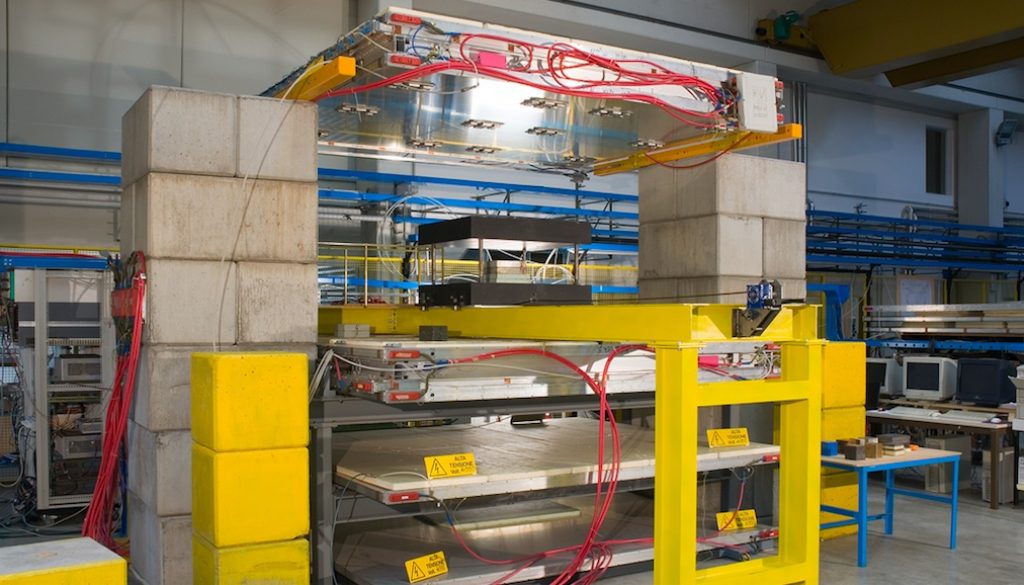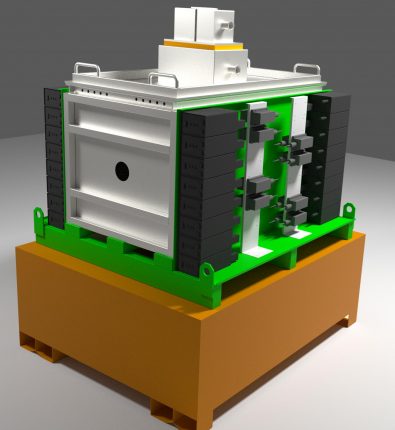Technological Research
Scientific and technological research are closely linked, like two sides of the same coin.
At INFN, researchers engineers and technicians work together in the design and construction of the experimental equipment. Indeed, every two INFN researchers can count on a technologist, that is mostly mechanical, electronic and computer engineers, and on a technician.
List of tech research activities
From Science to Technology
From Technology to Science
Technological research
at INFN Padova
The technological research and development activities at INFN are coordinaed by the National Scientific Commission 5 (CSN5) on the national scale, and by Group 5 locally in Padova.
Also, there are several special projects especially focused on particular applications, e.g. INFN-E which is concentrated over the development of competences and equipment in the field of energy, and other activities mostly founded with external founds or in collaboration with public or private entities, generally encompassed in the context of Technological Transfer.
Below we present some projects of the Padova Section where scientific and technological research meet:
Cloud Veneto
Cloud Veneto is an initiative involving ten departments of the University of Padova, the INFN Padova Section (National Institute of Nuclear Physics) and the Legnaro National Laboratories of the INFN. These users have a cloud infrastructure at disposal. The INFN resources of CloudVeneto are also integrated with the national INFN Cloud infrastructure.
More informations
Additive Manufacturing
DIAM is a workgroup of the INFN Padova section. It was born in 2016 and it is intended to carry on scientific and technological research on Additive Manufacturing (AM). The multi-disciplinary team include engineers, researchers and technicians with a background in mechanics design and material sciences. The laboratory is equipped with three SLM printing machines.
The research aims at developing new printable metals and metal alloys, in particular refractory metals pure copper and copper alloys, in order to fulfil the high design constraints in fusion environment applications.
More informations
The MUTOMCA project
The goal of the MuTomCa (MUon TOmography for CAstors) progect is to reconstruct, in a completely safe way, the 3D density map of exhaust nuclear fuel stored in the european nuclear power plants’ warehouses by means of a technology, which was originally developed in the field of particle physics. The project is intended to build a muon detector – e.g. muons are electron-like particles with a mass 200 times bigger – able to provide a precise tomographic image of the castors’ interiors operating in a non-invasive way.
Website
The MOPEA project
The MOPEA (Modular Optically Powered Electrostatic Accelerator) project aims at developing a propotipe for an electrostatic accelerator for light ions, where the high voltage is generated in a completely new way, that is, exploiting lasers and photovoltaic solar cells. This method naturally insulates the system from the surroundings, allowing the connection with generators over a wide voltage range in series. In turn, this allows the production of upgradable accelerators with easy mainteability. The control system operates over the single modules. This ensures more stability and guarantees better beam energy resolution. Accelerators of such physical dimensions are largely used in industry, for ionic implantations and in medical sciences to produce x-rays for imaging.
The CLEANDEM project Cyber physicaL Equipment for unmAnned Nuclear DEcommissioning Measurements
What
CLEANDEM aims at significantly improving current processes involved at different steps of nuclear decommissioning and dismantling (D&D) operations.
Who
The CLEANDEM consortium will involve leading-edge R&D organisations, key industrial partners and reference end-users.
Why
- to have a significant reduction of the dose received by operators,
- to optimize time and cost related to D&D operations,
- to have high-quality level of measurements and, finally,
- to improve of the competitiveness for the companies involved in the consortium.

How
- Technologies which can be embedded on Unmanned Ground Vehicles (UGV) to enable the full remote nondestructive characterization in harsh environments, hence reducing human exposure to radiation.
- A Digital Twin (DT), enabling to save and update in real time the radiological status of a facility to be decommissioned, and which will be considered as a digital memory.
This project has received funding from the European Union’s Horizon 2020 research and innovation programme under grant agreement No 945335.


